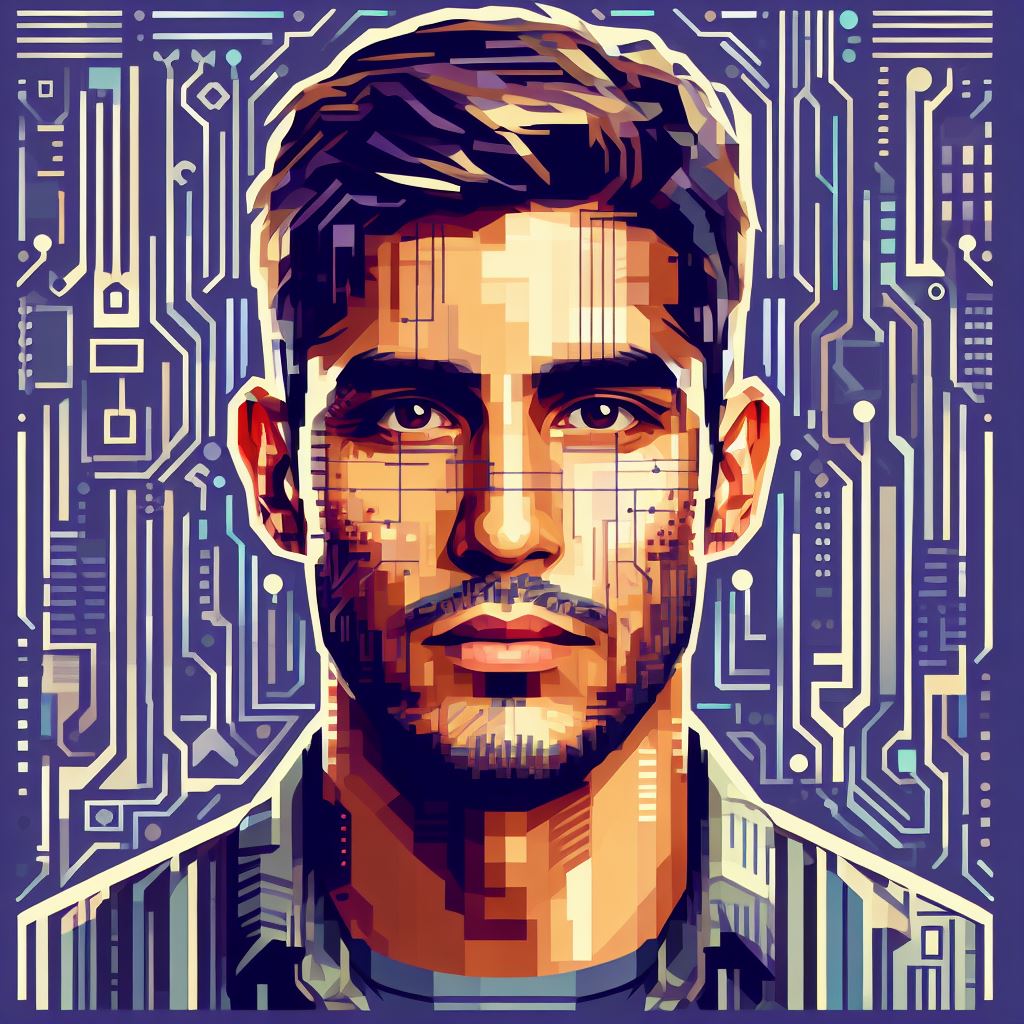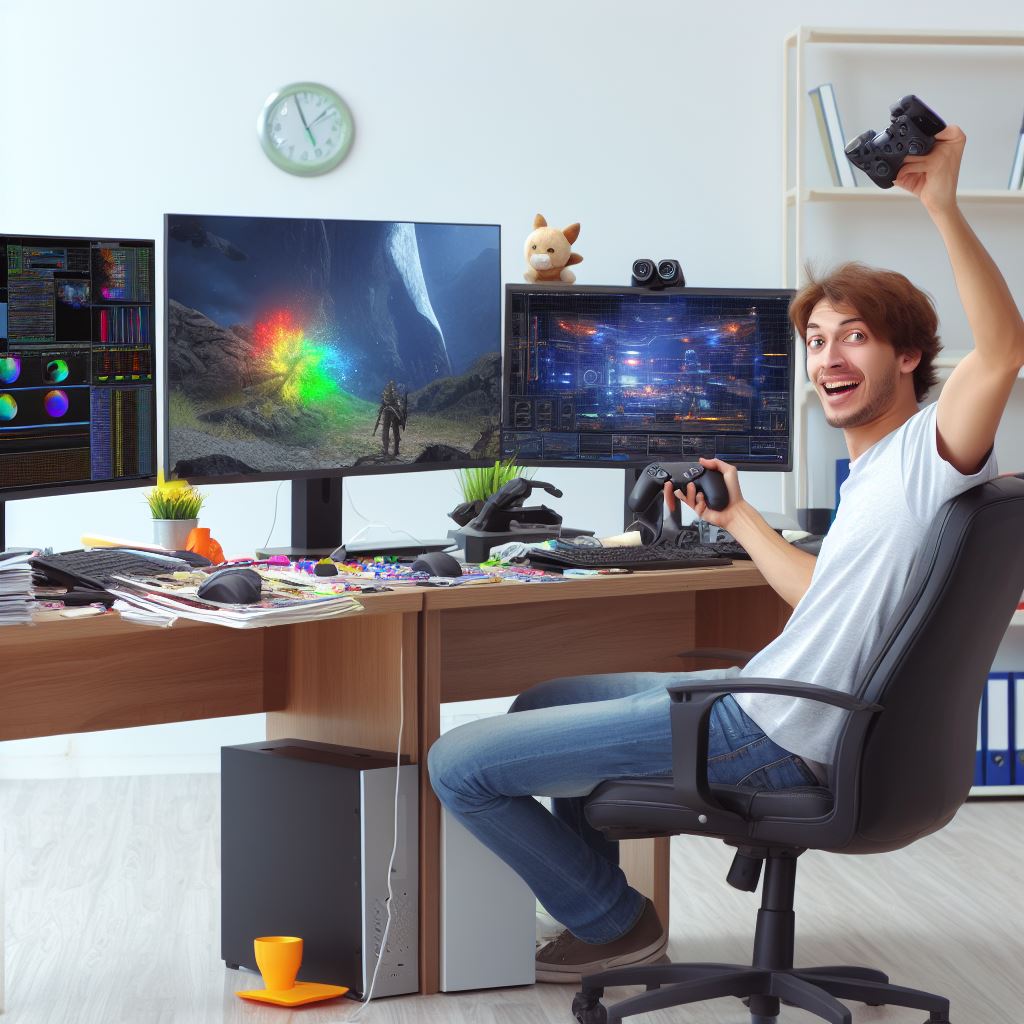Introduction
“Hello World” is a common phrase used as the first program in any programming language.
Arduino is an open-source electronics platform popular among hardware enthusiasts for its versatility and simplicity.
It allows users to create interactive projects easily.
Brief Explanation of the Concept of “Hello World”:
- Initiation Ritual: “Hello World” is the traditional starting point for programmers, a simple but pivotal introductory code.
- Symbolic Message: It signals the system’s ability to take input and produce output, marking the beginning of coding adventures.
Definition of Arduino and Its Significance in the Hardware Community:
- Microcontroller Marvel: Arduino is an open-source electronics platform, a microcontroller-based toolkit for hardware enthusiasts.
- Versatile Creativity: Arduino empowers users to create interactive projects, from simple LED displays to complex robotic systems.
- Accessible Coding: With a user-friendly IDE, Arduino simplifies coding, making it accessible even for those new to programming.
- Community Collaboration: Arduino’s vast community shares projects, knowledge, and code, fostering a collaborative environment for learning and innovation.
- Educational Powerhouse: Widely used in education, Arduino introduces students to hands-on electronics, programming, and the Internet of Things (IoT).
Embark on your hardware journey with Arduino—a gateway to creativity, innovation, and a vibrant community of hardware enthusiasts. Say ‘Hello World’ to a new realm of possibilities!
Understanding Arduino
Arduino as an open-source electronics platform
Arduino is an open-source electronics platform that enables hardware enthusiasts to create interactive projects.
It consists of a physical board, software, and a community that supports its development.
The open-source nature of Arduino allows users to modify and enhance its functionality for their specific needs.
Arduino boards, featuring microcontrollers, read inputs, execute actions, and generate output signals—ideal for beginners learning electronics, programming, and innovation.
They utilize the Arduino programming language, rooted in C/C++, enabling seamless board programming.
Its simplicity and versatility make Arduino suitable for a wide range of applications, from simple LED blinkers to complex home automation systems.
Arduino’s main components and functionalities
Arduino boards come in different variations, but they all have common components such as input/output pins, power connectors, and USB interfaces.
The input/output pins on the Arduino board allow users to connect sensors, buttons, LEDs, motors, and other electronic components.
These pins can read digital and analog signals, enabling the board to interact with the external world.
Tech Consulting Tailored to Your Coding Journey
Get expert guidance in coding with a personalized consultation. Receive unique, actionable insights delivered in 1-3 business days.
Get StartedArduino boards have built-in libraries that provide functions to control various components and interfaces, simplifying the programming process.
One of the key functionalities of Arduino is its ability to communicate with other devices through various communication protocols like I2C, SPI, and UART.
Arduino can be connected to a computer or mobile device for programming and data exchange using a USB cable or wireless module.
The Arduino software, also known as the Integrated Development Environment (IDE), provides a user-friendly interface for writing and uploading code to Arduino boards.
Arduino’s software library offers a vast collection of pre-written code examples for different functionalities, making it easier to kickstart projects.
It’s community is vibrant and active, with a wealth of online resources, forums, and tutorials available for support and inspiration.
It’s affordability, accessibility, and ease of use have made it a popular choice among hobbyists, educators, and professionals alike.
Therefore, Arduino is a powerful open-source electronics platform that enables hardware enthusiasts to unleash their creativity and bring their ideas to life.
It provides a beginner-friendly environment for learning and experimentation, with a wide range of components, functionalities, and community support.
Whether you are a beginner or an experienced tinkerer, Arduino offers endless possibilities for creating innovative and interactive projects.
So, say “Hello World” with Arduino and embark on an exciting journey into the world of hardware hacking!
Setting up Arduino
To set up Arduino, you will need the following hardware:
- Arduino board: This is the main component, which acts as the brain of your hardware project.
- USB cable: You will need a USB cable to connect the Arduino board to your computer.
- Breadboard: A breadboard is used to create temporary circuits for prototyping.
- Jumper wires: These wires are used to connect various components on the breadboard.
- LEDs: Light-emitting diodes (LEDs) are used to indicate the status or output of your Arduino project.
- Resistors: Resistors are important components that regulate the flow of current in a circuit.
- Button or switch: You will need a button or switch to input commands into your Arduino project.
- Sensors: Depending on your project requirements, you may need sensors such as temperature, humidity, or motion sensors.
- Motors: If your project involves controlling movement, you will need motors and motor drivers.
Providing step-by-step instructions on installing the Arduino software
Follow these steps to install the Arduino software on your computer:
- Visit the official Arduino website (www.arduino.cc) and navigate to the “Software” section.
- Download the Arduino Integrated Development Environment (IDE) for your operating system.
- Once the download is complete, open the installer and follow the on-screen instructions to install the software.
- After the installation is complete, launch the Arduino IDE.
- Connecting Arduino board to a computer
Now that you have the Arduino software installed, it’s time to connect the Arduino board to your computer:
Build Your Vision, Perfectly Tailored
Get a custom-built website or application that matches your vision and needs. Stand out from the crowd with a solution designed just for you—professional, scalable, and seamless.
Get Started- Connect one end of the USB cable to the Arduino board and the other end to an available USB port on your computer.
- Wait for your computer to detect the Arduino board. If prompted, install the necessary drivers.
- Open the Arduino IDE and go to the “Tools” menu. Select the appropriate board type (e.g., Arduino Uno) and port.
- To test the connection, click on the “Upload” button (a right-facing arrow) in the Arduino IDE. If the code uploads successfully, the connection is established.
Now you have successfully set up Arduino and established a connection between the board and your computer!
In this section, we discussed the necessary hardware requirements for Arduino, including the Arduino board, USB cable, breadboard, and various components like LEDs, resistors, and buttons.
We also provided step-by-step instructions on installing the Arduino software on your computer and connecting the Arduino board to a computer using a USB cable.
With this setup, you are ready to start programming and building exciting hardware projects with Arduino!
Read: Scala Programming: A Beginner’s ‘Hello World’ Guide

Writing the “Hello World” program
Arduino’s programming language is based on C/C++, making it easy for software developers to get started with hardware programming.
The Arduino IDE is a software tool that provides a simplified interface for writing and uploading code to Arduino boards.
Step-by-step guide on writing the code for “Hello World” on Arduino
- Open the Arduino IDE and create a new sketch.
- Declare the necessary variables and libraries.
- Set up the Arduino board by initializing the pins and configuring any other required settings.
- Write the “setup” function, which runs once when the Arduino board is powered on or reset.
- In the “setup” function, configure the serial communication with the computer.
- Write the “loop” function, which runs continuously after the “setup” function.
- In the “loop” function, use the “Serial.println()” function to print the “Hello World” message.
- Upload the code to the Arduino board.
Writing code for Arduino allows hardware enthusiasts to bring their projects to life.
With C/C++ as the underlying programming language, it becomes easier for software developers to transition into hardware programming.
The Arduino Integrated Development Environment (IDE) provides a user-friendly interface for writing and uploading code to Arduino boards.
Code’s structure and purpose
To get started on writing the “Hello World” program, open the Arduino IDE and create a new sketch.
Begin by declaring the necessary variables and libraries.
Then, set up the Arduino board by initializing pins and configuring any other required settings.
The next step is to write the code for the “setup” function.
Optimize Your Profile, Get Noticed
Make your resume and LinkedIn stand out to employers with a profile that highlights your technical skills and project experience. Elevate your career with a polished and professional presence.
Get NoticedThis function runs only once when the Arduino board is powered on or reset.
In the “setup” function, configure the serial communication with the computer using the Serial.begin() function and specify the desired baud rate.
After writing the “setup” function, proceed to write the code for the “loop” function.
This function runs continuously after the “setup” function.
Inside the “loop” function, use the Serial.println() function to print the “Hello World” message.
The println function ensures messages print on new lines. Click “Upload” in the IDE to compile and transfer code to the Arduino board via USB.
Upon successful upload, the Arduino executes the program, continuously printing “Hello World” until power interruption.
The code is simple: include libraries, define variables, and write setup and loop functions.
The setup function is responsible for configuring the serial communication, while the loop function takes care of printing the message.
By understanding and modifying this simple “Hello World” code, hardware enthusiasts can start building more complex projects using Arduino.
Read: Developing Your First ‘Hello World’ Application in Dart
Uploading and Executing the Code
Instructions on compiling the code in the Arduino IDE
- Connect your Arduino board to your computer using a USB cable.
- Open the Arduino IDE on your computer.
- Click on “File” in the menu and select “Open”.
- Locate the sketch file that contains your code and open it.
- Make sure the correct board and port are selected under the “Tools” menu.
- Click on the checkmark icon to verify the code for any errors.
- Fix any errors that are detected by the IDE.
- Once the code has been successfully verified, click on the right arrow icon to upload the code to the Arduino board.
- The code will be compiled by the IDE and then uploaded to the board.
- Wait for the uploading process to complete and check the status bar at the bottom of the IDE for any error messages.
- If the upload is successful, you will see a “Done uploading” message in the status bar.
Guidance on uploading the code to the Arduino board
- Ensure that your Arduino board is connected to your computer via a USB cable.
- Open the Arduino IDE and navigate to the sketch containing your code.
- From the toolbar, click on the “Upload” button or press Ctrl + U.
- The IDE will compile your code and then initiate the upload process to the Arduino board.
- Wait for the uploading process to finish. You can monitor the progress in the status bar.
- If there are any issues during the upload, check the error messages displayed in the IDE.
- Troubleshoot any errors by reviewing your code or verifying the connection between the board and computer.
- Once the upload is successful, you will see a “Done uploading” message in the IDE.
The process involved in executing the code
After uploading the code, the Arduino board will reset itself and start running the program.
The board will execute the code line by line, following the logic and instructions defined in the sketch.
If the code includes any output instructions, such as printing to the Serial Monitor, the board will follow them accordingly.
Real-time interactions, if programmed, will be executed by the Arduino as the code runs.
The execution continues until either the program reaches its end or encounters a loop that runs indefinitely.
During execution, the board may interact with various hardware components connected to its pins and perform specific actions.
It is important to ensure that the hardware setup is correctly connected and is compatible with the code being executed.
If there are any issues or unexpected behaviors during execution, double-check your code and hardware connections.
Debugging techniques, such as using serial debugging, can help identify and resolve any problems in the code or setup.
Regularly test and monitor the execution of your code to ensure it is performing as expected.
By following the above steps, you can easily compile, upload, and execute your Arduino code, allowing you to bring your hardware projects to life.
Read: Hello World in SQL: Starting with Database Queries
Troubleshooting and Common Errors
While working with Arduino, it’s common to encounter a few issues while uploading or executing the code.
Here are some potential problems you might face:
- Incorrect port selection: Make sure you have selected the correct port for your Arduino board in the Arduino IDE. Your computer may recognize the board as a different port.
- Missing or outdated libraries: If you are using external libraries, ensure that they are properly installed and up to date. Incompatible or missing libraries can cause compilation errors.
- Incorrect board selection: Verify that you have selected the right board model under the “Tools” menu in the Arduino IDE. Uploading code to the wrong board can lead to unsuccessful execution.
- Improper wiring: Double-check your hardware connections to ensure they are correctly wired. A loose or incorrect connection can prevent the code from running as expected.
- Insufficient power supply: Some projects require additional power sources. If your setup involves power-hungry components, make sure you provide a sufficient power supply.
- Conflicting programs or drivers: Certain programs or drivers on your computer may interfere with the communication between the Arduino board and the IDE. Close unnecessary programs to avoid conflicts.
- Memory issues: Arduino boards have limited memory. If your code utilizes a lot of memory or variables, it may not upload or run properly. Optimize your code to conserve memory.
- Hardware defects: Sometimes, the issue lies with the hardware itself. Check for any damaged components or faulty connections that could be causing the problem.
Suggestions for troubleshooting and fixing common errors
If you encounter common errors while working with Arduino, here are some troubleshooting steps and solutions:
- Read error messages: Pay attention to the error messages displayed in the Arduino IDE. They often provide helpful clues about the cause of the problem.
- Check code syntax: Review your code for any syntax errors or typos. Even a minor mistake can prevent successful compilation or execution.
- Reinstall Arduino IDE: If you continue to face issues, try reinstalling the Arduino IDE. This can resolve any potential software conflicts or corruption.
- Restart Arduino board: Sometimes, a simple restart of the Arduino board can clear any temporary glitches or errors it may be experiencing.
- Test code incrementally: When working on complex projects, break down your code into smaller parts and test them individually. This helps identify specific sections causing errors.
- Seek help from the community: Arduino has a vibrant community of enthusiasts and experts. Join forums or online communities where you can seek guidance from experienced users.
- Refer to official documentation: Arduino provides comprehensive documentation on their website. Consult their resources, including tutorials and troubleshooting guides, for assistance.
Resources for further assistance, such as forums or communities
If you need additional help or want to explore further, here are some valuable resources available for Arduino enthusiasts:
- Arduino Forum: The official Arduino forum is a great platform to ask questions, share ideas, and receive support from a thriving community of Arduino enthusiasts. Access it at forum.arduino.cc.
- Arduino Stack Exchange: Stack Exchange is a Q&A platform catering specifically to Arduino-related queries. Search for answers or ask your own questions at arduino.stackexchange.com.
- Arduino Reddit: The Arduino subreddit (/r/arduino) is another active community where users share projects, news, and seek assistance from fellow Arduino users.
- Local Arduino meetups: Check for local Arduino meetups or maker spaces in your area. Attending these events can provide hands-on help and networking opportunities.
Remember, troubleshooting is an essential part of the learning process.
Embrace the challenges, experiment, and utilize the available resources to overcome common errors and achieve your hardware goals with Arduino.
Read: Learn to Code: Writing ‘Hello World’ in Ruby
Conclusion
Throughout this blog sections, we have explored the significance of saying “Hello World” with Arduino for hardware enthusiasts.
By starting with a simple project like this, beginners can gain a strong foundation in understanding Arduino’s functionality and syntax.
This step allows them to progress to more complex projects confidently.
Now that you have successfully completed your “Hello World” project, it’s time to dive into the vast world of Arduino projects.
There are endless possibilities to explore, like controlling LEDs, motors, sensors, and even creating Iot devices.
Embrace your creativity and keep pushing the boundaries of what you can achieve with Arduino.
Therefore, Arduino offers an exciting platform for hardware enthusiasts to bring their ideas to life.
We hope this blog section has inspired you to embark on your Arduino journey.
Share your thoughts, ask questions, or share your own projects in the comments section below.
Let’s create a vibrant community of passionate Arduino enthusiasts.




